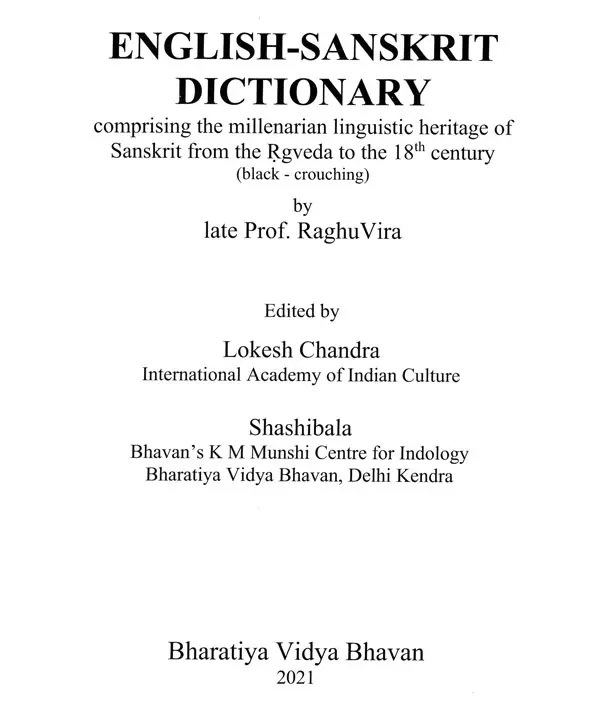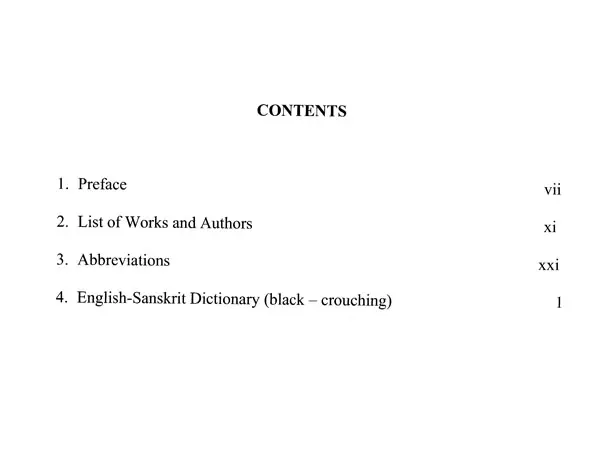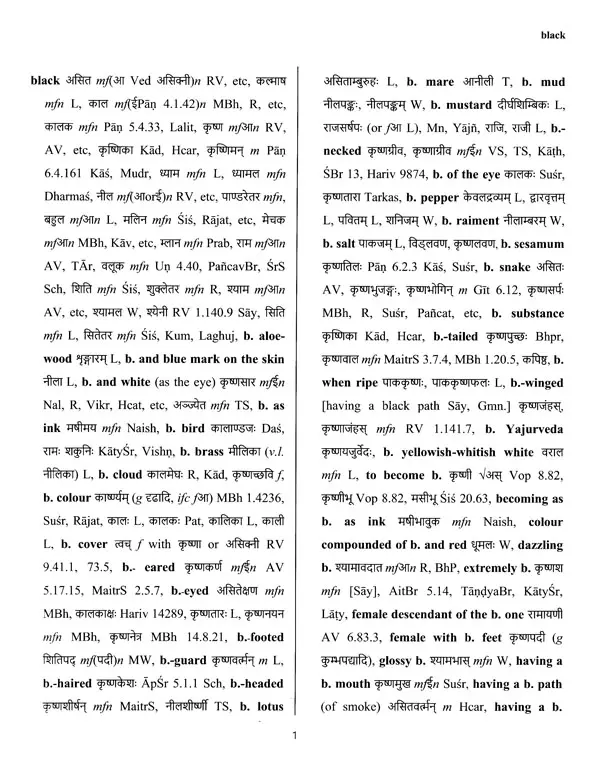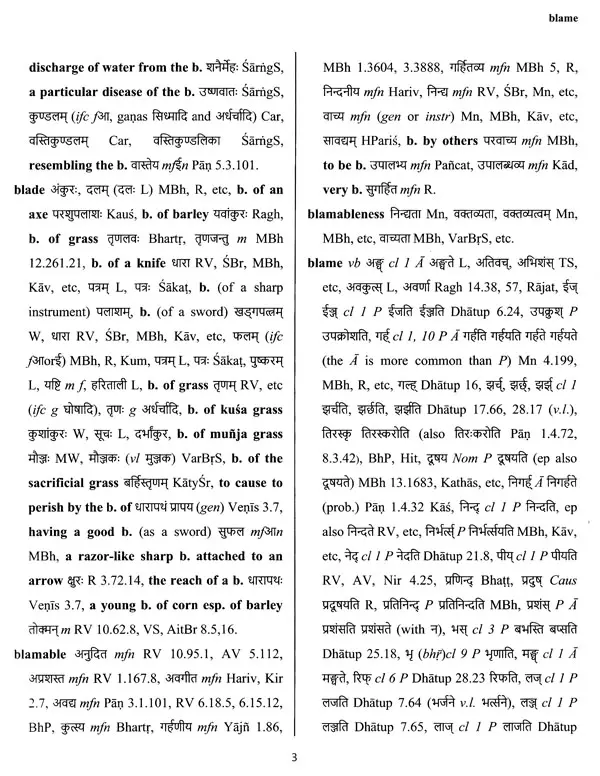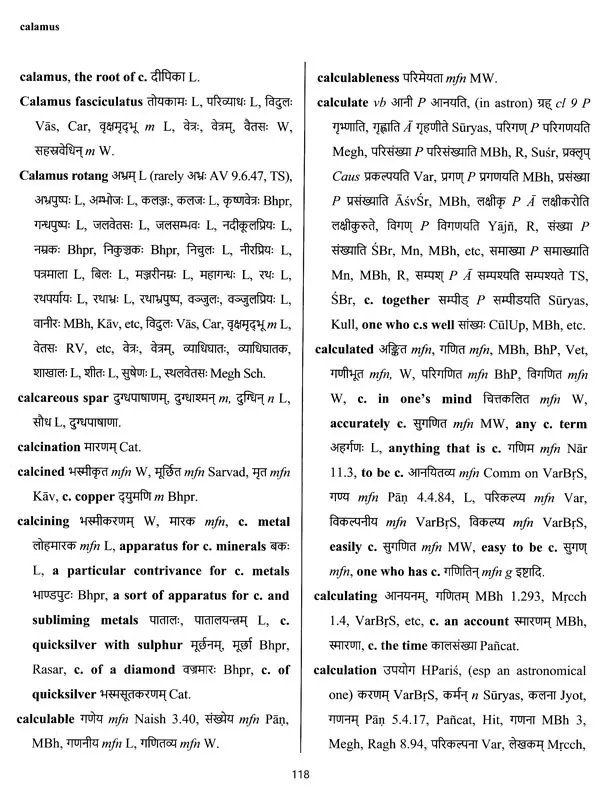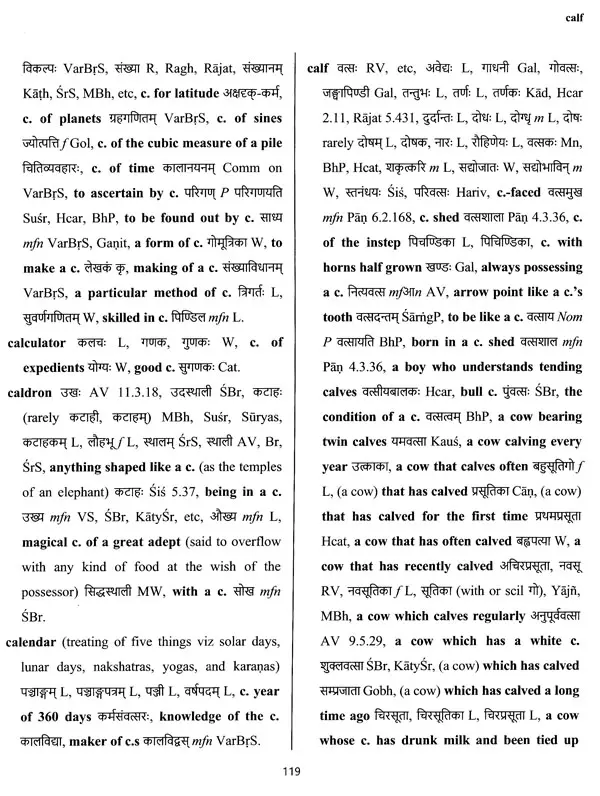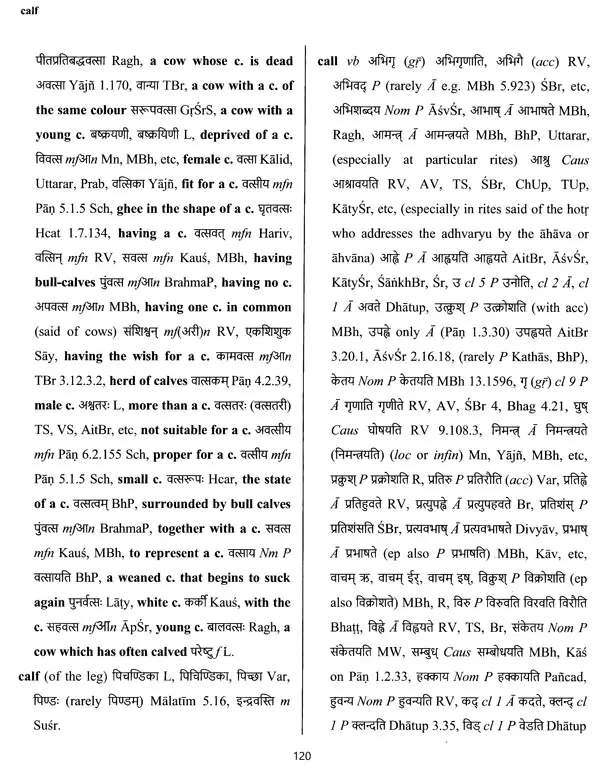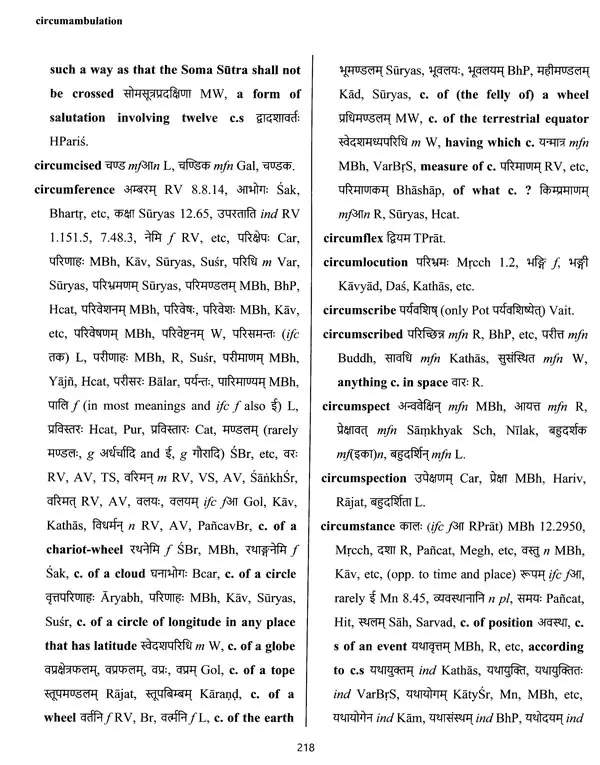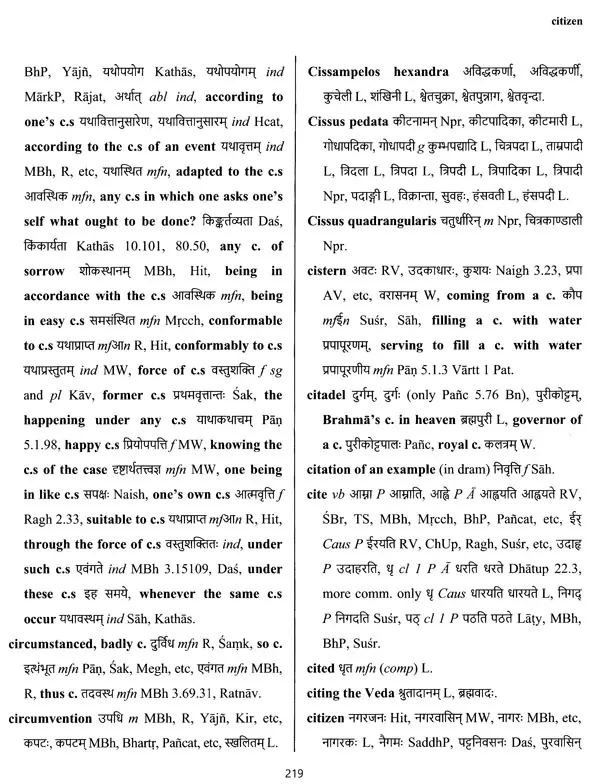
English- Sanskrit Dictionary- Comprising The Millenarian Linguistic Heritage of Sanskrit From The Rgveda to The 18th Century (Black- Crouching)
Book Specification
| Item Code: | UAJ885 |
| Author: | Raghu Vira |
| Publisher: | Bharatiya Vidya Bhavan |
| Language: | English and Sanskrit |
| Edition: | 2021 |
| ISBN: | 9789391622039 |
| Pages: | 442 |
| Cover: | HARDCOVER |
| Other Details | 11.00 X 9.00 inch |
| Weight | 1.45 kg |
Book Description
It is the first comprehensive English-Sanskrit dictionary of all the Sanskrit equivalents of an English word. It is all-inclusive and covers the complete linguistic heritage of Sanskrit from the Rgveda down to the eighteenth century. All the roots of the Dhatupathas have been incorporated so that the vast semantic spectrum of Sanskrit vis-a-vis a single English verb can be envisaged in its timeless efflorescence. The rare root du (Dhatupatha 22.46) occurs once in the Rigveda and survives in two words in Classical Sanskrit: dura 'distance' and duta 'envoy'. It means 'to go', Davayati 'to make distant' occurs in the Bhattikavya 2.55 which had vowed to use rare words and rare formations of grammar. This root travelled as far as Greece and MW cites three conjugated forms in Greek: duo, duno, deuomai. The innermost sanctum of a temple in Greece was aduton (garbhagrha), literally a place not to be entered (from a 'not' + dutos 'to be entered' from the root duein 'to enter'). It is spelt `adytum' in English as a technical term in Greek archeology.
Sanskrit is rich in synonymy and this affluence is fully reflected in the overflow of Sanskrit words for any English vocable. Sir Monier Monier-Williams compiled his magnum opus, A Sanskrit-English Dictionary which appeared from the Clarendon Press in 1899. Prof. Raghu Vira compiled this English-Sanskrit Dictionary to include each and every item from Monier-Williams. This grandfather dictionary which will run to ten volumes was compiled as a basic component for the creation of new words in Indian languages. This dictionary with colossal number of Sanskrit nouns, verbs, adjectives etc. for every semanteme in English ensures that Indian languages will never stand in dearth of fullest expression. Scientific interest demands specialization and infinite ramification of technical terms. This dictionary is a vade mecum for creating terms for humanities as well as for the natural sciences.
This dictionary represents the linguistic dreams of a renascent India seeking freedom from centuries of foreign domination in the dual paradigms of self-governance and self-expression. The karma of words had to rise to the proliferation of terms that were the inner being of the constantly evolving progress of phenomena and concepts in the natural sciences both in depth and precision. Prof. Raghu Vira realized during his three years of profound study and intense perception of the astounding development of Europe that India had to evolve inter alia, a language of great power whose prime qualities have to be precision and lucidity. It should be an ideal language with the intrinsic power to go to the core scientific concepts, to grasp ideas that defy expression in ordinary literary language. The language of science has to express ideas far from being simple and needs a specialized vocabulary which can express them shortly and perfectly. It has to be perfectly exact and purely intellectual that excludes vagueness, imperfection and superfluity. Prof Raghu Vira realized in his unravelling of the modernity of Europe that 'word creation' had made thinking easier and more precise. Inventors of new words had to remember the advice of the great French chemist Lavosier that the linguistic instrument fashioned by man must be the best to work for the advancement of science. New words should have four qualities of brevity, euphony, precision and purity. The purity of a coined word was emphasized by H. W. and F. G. Fowler: "in making new words the two languages [Greek and Latin] should not be mixed." Prof RaghuVira saw that the advance of science had been so rapid that no language could supply sufficient words for its needs. His scientist colleagues told him that Dr. Kasimir Funk invented the word vitamin in 1912 (only 16 years in 1928) and it has saved much time and labour and a lot of ink. The trickle of new scientific words had become a steady stream from the end of the eighteenth century and by the end of the nineteenth it has swelled to a flood. It was a stream arisen from the springs of Athens and Rome. The Classical garb worn by the language of science was ever in vigorous adolescence. Intrinsic values of words with clear implication and precise meaning were clearly defined in neologisms from Classical bases for all-European usefulness. Greek furnished the basis of the majority of new scientific words. Faraday and his successors derived descriptive terms of electro-chemical phenomena exclusively from Greek roots: electrolyte, electrode, cathode, anode, cation, anion and ion. Technical European vocabulary has a large proportion of Latin roots. Tempo of invention and expanding volume of scientific research increased the inflow of new words. Soon school boys would discuss stratosphere flying as light-heartedly as they would speak of kites. The historic memory of the departed glory of Greek is cherished in the numerical prefixes (mono-, di-, tri-, deca-, kilo-) or outstanding suffixes -ic, -ism (as in dialectic, theism). As the inescapable wide-ranging 'word creation' was in full swing in the nineteenth century, the survival of the vocative in spoken Greek and the trace of flections in Celtic language took the West to Sanskrit. Andrew Murray wrote a History of European Languages in 1801 emphasizing the relation between Gaelic and Sanskrit.
**Contents and Sample Pages**
